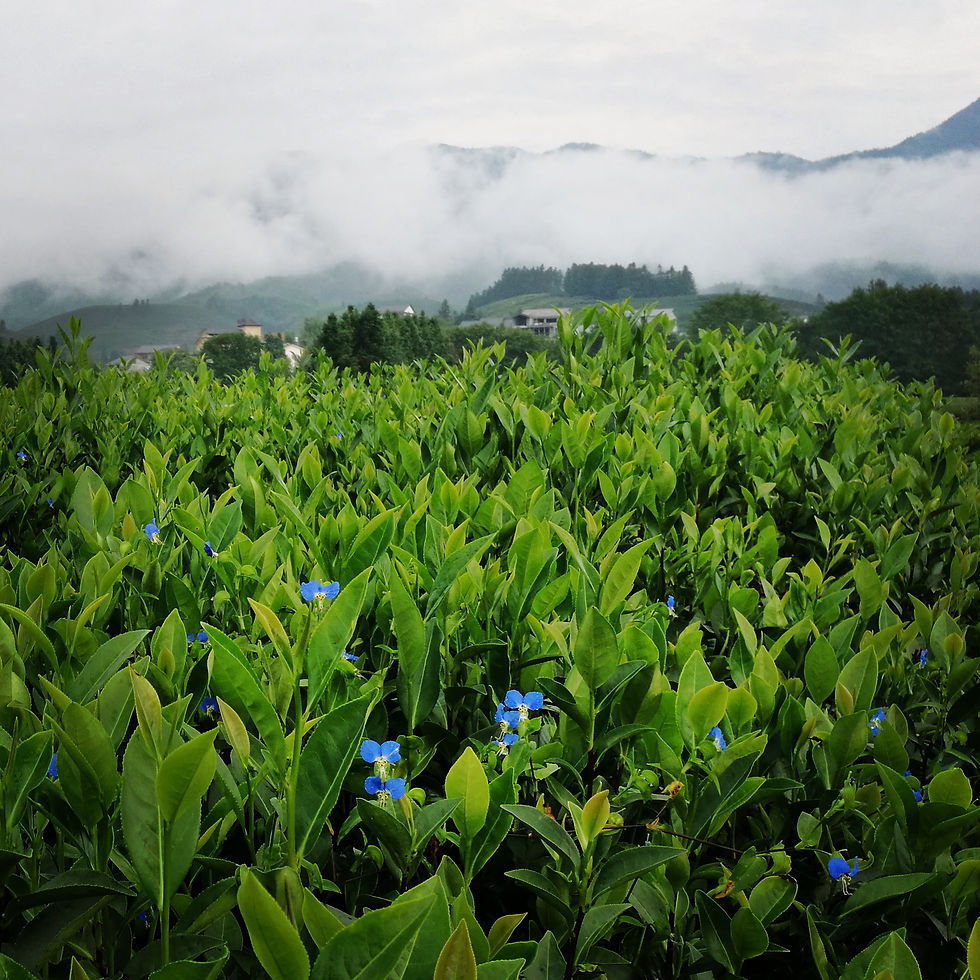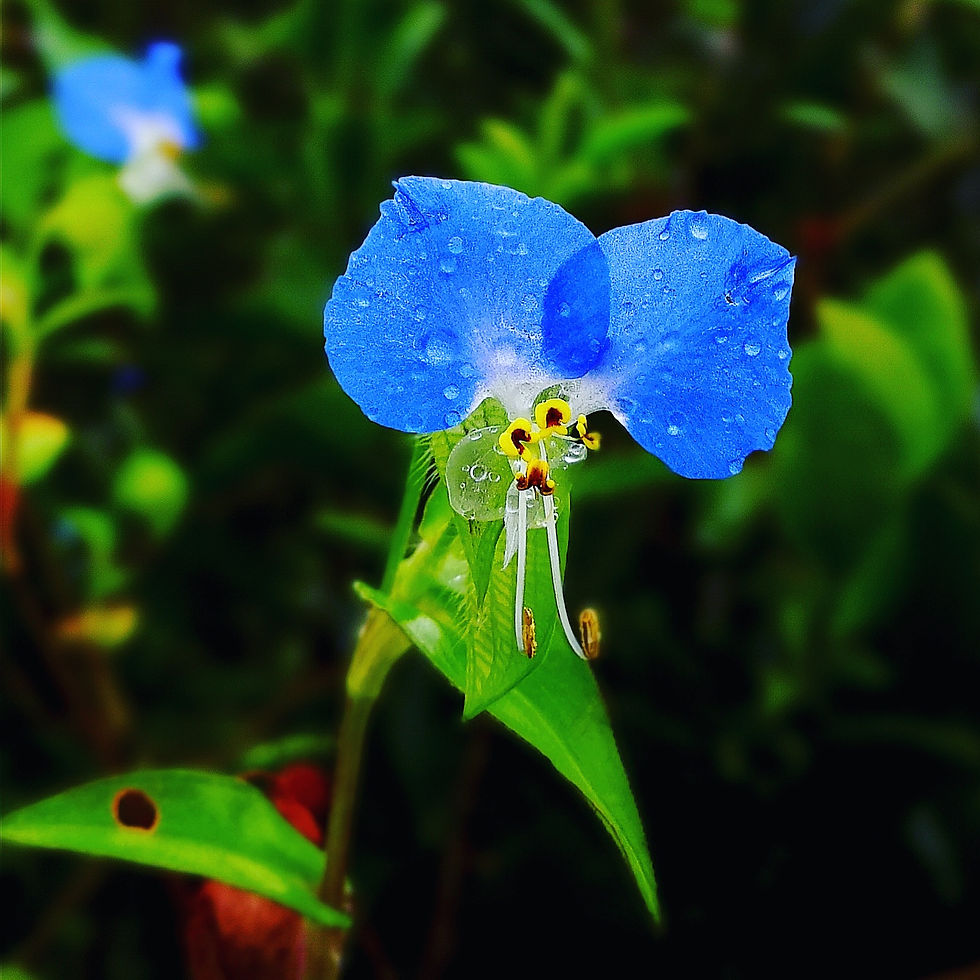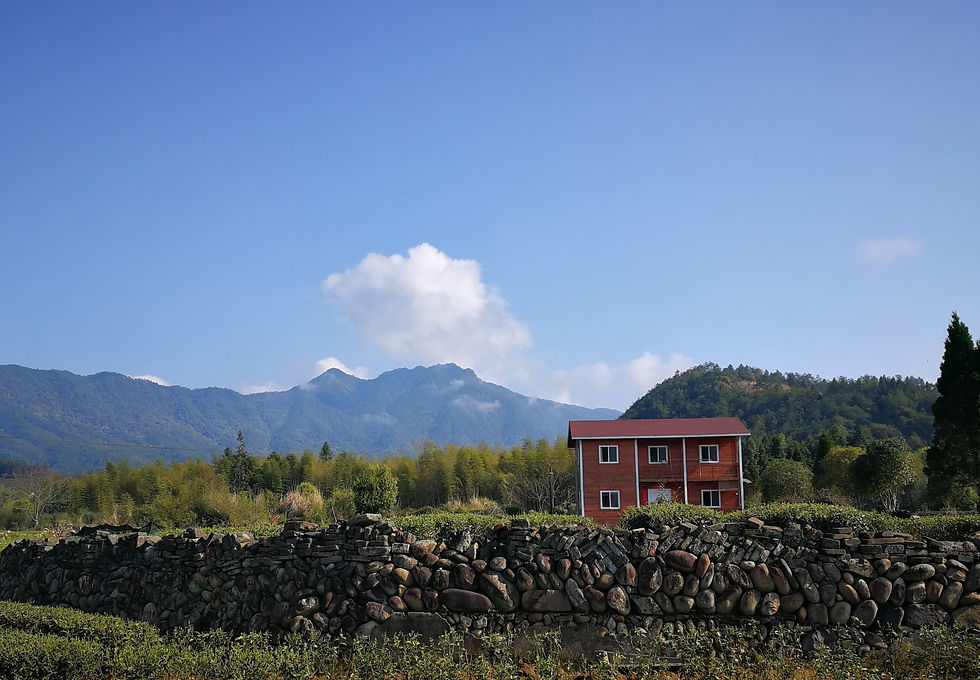Blog 64: Transient and Overlooked Lives in Mountains
- Valley Brook Tea

- Oct 26, 2018
- 3 min read
In the past few weeks, this blog has been heavy on technical parts of the tea-making. We introduced Da Hong Pao (Part I, Part II, Part III), and we also talked about a little bit more about White Tea (click here for previous blog). However, as we’ve said many times, tea plants or tea-making skills do not make tea. Tea makers make tea. Without knowing the life in tea mountains, how can one truly understand the broader cultural and the lifestyle of tea?
If you come to the tea mountain in autumn, you’d meet quite a lot special plants.
The autumn in Wuyi mountains is soaked in a layer of subtle light. Unlike the excitement of summer, the taste of autumn is the modesty in between the sky and the land.

Plants are still thriving on our ground. However, it is the little colors that attract our attention. These colors are only here for autumn. If you come late, they won’t stay.
Every autumn, we return to the mountains. Blue flowers would be blooming. Interestingly, these flowers are small vines that attached to tea plants. Little flowers hide inside a bunch of tea plants. When a gentle breeze blow over the field, blue flowers would reveal themselves to us. Each year, flowers would meet the same us, but we are seeing different flowers. These flowers have an incredibly short lifespan. Most of them will be gone in 2 weeks. They are our transient guests. Come unannounced, and leave quietly.

If you want to meet some old friends, you have to visit the village. You’ll be greeted by dogs, chicken, geese and ducks. Animals here are not caged or housed. They’re truly free in the village and have their own communities. Every single household has at least a dog. Most dogs in the village are not pets but guards, and they have an alfa dog as the leader of the pack. In Huangcun, where our Wuyi oolong tea mountain is, Heipi is the current leader of the pack. Everyday, he leads a group to tour the entire village. Autumn is actually a relaxing time for Heipi and his friends. During the busy spring harvest, there are lots part-time workers and strangers in the village. Heipi and his team also need to work overtime to safeguard the village. During the busiest tea-making season, you can see them patrolling all the time.

But our house in the mountain is not actually inside the village. We need to walk a little bit north towards the Nine Bend River. Just behind our cabin, in a bamboo grove near the river, there are thousands of birds nested. Every dusk, the sound of thousands of birds chirping marks the end of a peaceful autumn day.
October night in the mountain can be very cold already. Animals can stay warm at their homes, but some plants can hardly live through the night. But don’t worry, the next morning, there’ll be new vines of flowers blooming. Heipi and his friends will get up in the morning to begin their daily patrol again. This daily routine is how tea-making villages in Wuyi Mountains have survived for more than 1100 years. Dynasties and governments have changed, and technologies have advanced. But it’s not the government or the technology that keeps tea-making and tea-making villages alive. It is the life —— those little, often overlooked lives that form the way of life here.

You can’t fully understand tea if you don’t brace this way of life. Some tea lovers and tea business owners like to show off their expertise of tea by calling tea plants “camellia sinensis”. Amusingly, this is also the first term you see when searching “tea plants” in Wikipedia. After this term, everything becomes scientific as if tea plants become an industrial product that can simply be mass produced anywhere. While I don’t question their enthusiasm, I do believe that people who start a tea talk with “camellia sinensis” are clearly those who have never been to a real tea mountain and never experienced true tea culture.

Once you come to the tea mountain, you’d realize just how irrelevant and wrong most things you learned from the internet are. It’s the symphony of all brilliant lives that makes a tea mountain different from a tea plantation. A tea plantation is industrial, everything in a tea plantation is shouting “we’ve conquered here” (see our previous blog for more). A tea mountain, however, is home to not just tea plants. It’s home to lives, thriving lives, dying lives, and all lives within and without.
We hope you enjoyed today’s blog. As always, if you have questions or suggestions, please leave a comment, tweet us @valleybrooktea or email the author directly at zhang@valleybrooktea.com. Please also follow us on Instagram @valleybrooktea and join our mail list to get our daily tea updates and our latest promotions!




Comments